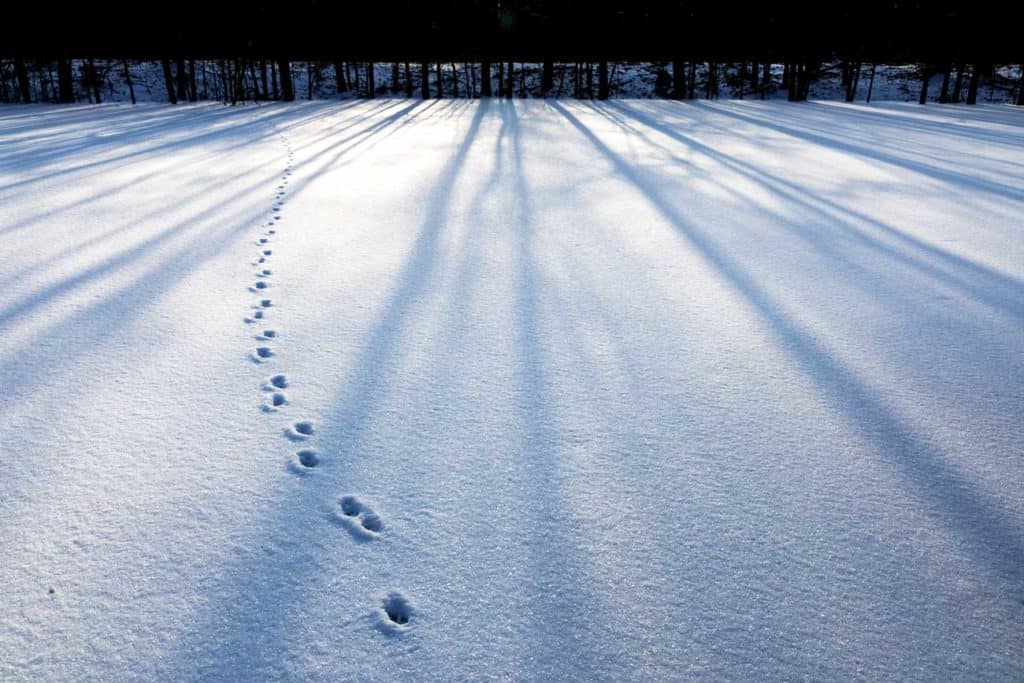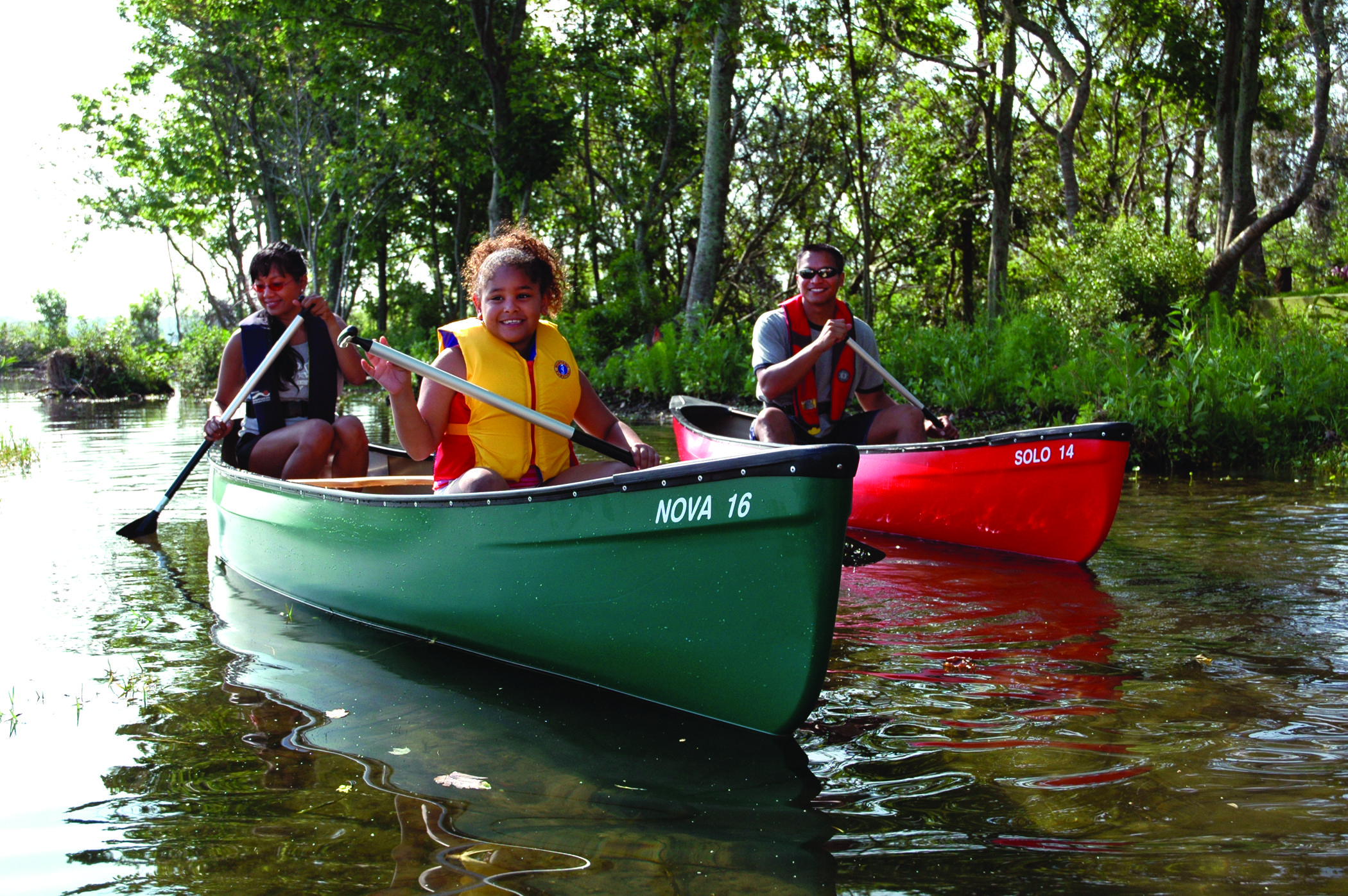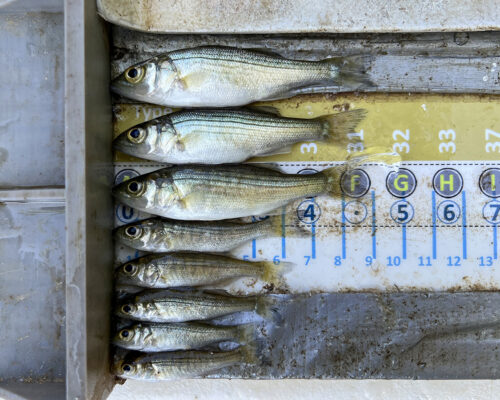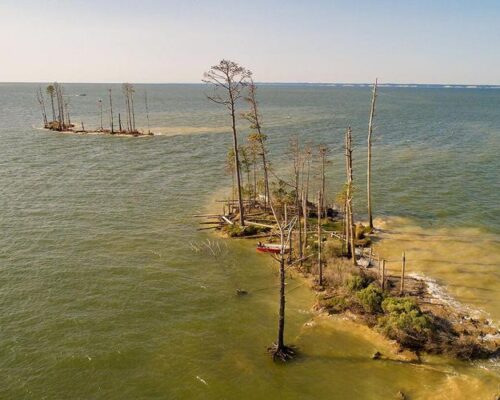Winter slows down everything around the Chesapeake. Plants and cold-blooded critters go dormant. We humans wisely become more conservative about how we spend our time outdoors. This is not the time for epic voyages over cold water.
That said, our Bay is very much alive at this season, and there’s much to see and think about. Super-low tides, driven by the moon and northwest winds, expose the bare bones of river shorelines and beaches. Empty tree branches help make for a different land-and-waterscape with its own kind of austere beauty. Clear skies let us see long distances. A fallen log in the sunny lee of a marsh becomes a great spot to sit, pull out thermos and oatmeal cookies, and simply watch.
Watch what? The obvious answers are the warm-blooded creatures still active at this season: water birds like herons and gulls, plus the diverse community of migratory ducks, geese, and swans that grace our region now; mammals like raccoons, muskrats, and river otters are active, though the most common signs of them will be tracks. But sometimes the best parts of a winter walk come from just watching, attentively, for a solid chunk of time without actively searching for anything specific. That kind of watching helps us see details we might otherwise miss, and it helps us contemplate questions like “I wonder what is going on underwater right now? What is it like to be an oyster right now, or a seaworm? How does it feel to be a blue crab, asleep in mud? Or a young rockfish, suspended deep in a channel?”
You may not have answers yet, especially if you are new to this kind of winter walking. It helps to find a knowledgeable friend to walk with. Dogs and children are great additions, as long as you gauge their needs and weather tolerance. The key is to keep spending some time out there, and maybe do a little reading back at home. You’ll be surprised at how much the experiences add up.
What to Wear and Take Along
Let common sense and a weather eye dictate clothing and footwear. Study the weather before you go out. How cold will it be? What will the wind be like in the location where you’re walking? Will you be going on a long loop trail that commits you to a certain time out in the weather, or can you come in easily if you (or your companions) get cold?
If you’re new to being outdoors in a damp Chesapeake winter, pay attention to layers of insulation, with some kind of shell parka to break the wind. Standards include fleece and wool because they stay warm even when wet, with a moisture-wicking layer next to the skin. Gore-Tex or some other breathable, waterproof, and windproof outer layer with a hood seals in body heat. Down parkas and vests are great on dry days, though the filling collapses when damp. Flannel-lined khakis and jeans shield legs. Hats and gloves are musts for comfort.
“Sensible shoes” depend on your planned substrate. Athletic shoes with cushioned socks will work fine for a dry day over an established trail with a marsh boardwalk, like the one along the Susquehanna waterfront in Havre de Grace or the Potomac at Dyke Marsh in Alexandria. That said, it helps a lot to if footwear is waterproof. Rubber-bottom “Bean Boots”—whether from L.L. Bean himself or somewhere else—make a lot of sense around the Chesapeake. The eight-inch models have served me well for decades, with cushioned insoles and medium-weight wool socks. They are light and comfortable to walk in. Just be sure to remove the insoles in the evening to let everything air out. Along beaches like Bethel in Mathews County, Virginia, and marshes like those at the Blackwater National Wildlife Refuge below Cambridge, knee boots (15–16″) of rubber or PVC can allow freedom to explore deeper, and in some places, even hip boots are valuable.
Finally, plan to carry a simple daypack for gloves, hats, and shells so you can add or take off clothing as the day progresses. Add a thermos of something warm, and snacks. Compact, illustrated field guides are always useful for everything from birds and trees to animal tracks. A pair of binoculars (not necessarily expensive if you’re starting out) and a small first-aid kit round out the basics.
Where to Walk
There are obvious major attractions for winter visits around the Chesapeake, like Blackwater, with its spectacular “big sky” views of the marsh country and its waterfowl; Sandy Point State Park, by the Bay Bridge east of Annapolis; Virginia’s Kiptopeke State Park, with sweeping views around the mouth of the Bay; and the James River Park on both sides of the water in Richmond. “Asking the Google,” as a young neighbor likes to say, yields many more in both Maryland and Virginia. The two state park systems are loaded with well-distributed, spectacular choices, some remarkably close to urban areas and some more rural. Be sure also to search for the online Maryland Interactive Trail Atlas at the Maryland Department of Natural Resources (dnr.maryland.gov) website and Virginia’s Department of Wildlife Resources website (dwr.virginia.gov) for its Where to View Wildlife page located under the Viewing tab. In the latter, pay particular attention to Wildlife Management Areas such as Hog Island on the Lower James River.
County governments around the Chesapeake take public access to the outdoors seriously, so searching a specific jurisdiction’s website for parks is well worth the effort. Arguably the largest complex is operated by the Maryland National Capitol Park & Planning Commission, a joint venture between Maryland’s Montgomery and Prince George Counties. If you’re based in that area, explore the Commission’s large Patuxent River Park, a remarkable oasis of high-quality wetlands, woodlands, and waters just a handful of miles east of the Capital Beltway. In my time as a Chesapeake Bay Foundation field educator, I spent more than 400 days leading students, teachers, and public groups along its creeks and trails. There’s always something interesting to see there, afoot or afloat.
Chesterfield County, on the south side of the James River opposite of Richmond, offers a map of 27 trails within the county. A favorite of mine is the Dutch Gap Conservation Area, behind Henricus Historical Park. But don’t neglect rural counties. Mathews County offers some equally spectacular public beaches fronting the widest part of the open Chesapeake. Search online for the Guide to Mathews County Owned Public Access Sites, a free PDF guide from the county to places like Bethel Beach. Charles County, Maryland, offers the lovely Indian Head Rail Trail, whose lower section follows the tidal section of Mattawoman Creek, another oasis of rich natural habitat near our Nation’s Capital.
Even towns and cities offer winter walks. Indian Head, Maryland—mostly known for a Navy Surface Weapons Explosive Ordnance facility fronting the Potomac—had the great foresight to acquire land at its back door along Mattawoman Creek for Mattingly Park. The adjacent, town-owned Slavin’s Dock offers boat launch facilities and great views of the creek’s tidal freshwater marshes, which are winter magnets for migratory ducks, geese, and swans. A visit there is a great way to begin a walk along the Indian Head Rail Trail.
As to larger municipalities, Richmond’s linear James River Park System is hard to beat. Owned by the City, it has for several decades operated in a remarkable partnership between a very small staff and the nonprofit, volunteer Friends of the James River Park. It provides extraordinary access to the miles-long Falls of the James and the upper end of the tidal portion in downtown. The Friends describe the Park as “extending in 14 sections from the Huguenot Bridge in the west to a half mile beyond the I-95 Bridge in the east. It includes most of the fall line of the James River. Rocks, rapids, meadows, and forests make for an area of unspoiled natural beauty—a little bit of wilderness in the heart of the city.”
Winter on the Chesapeake? It’s a pretty cool season. Go see for yourself.




